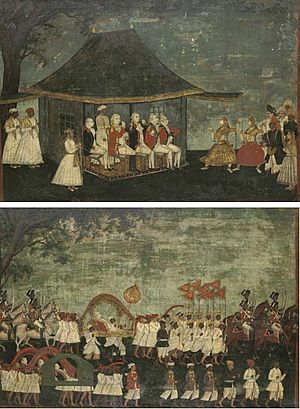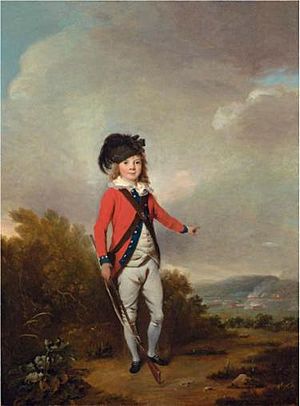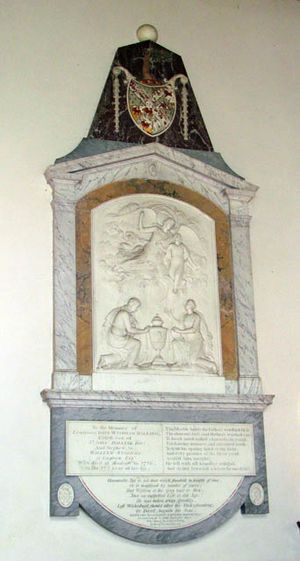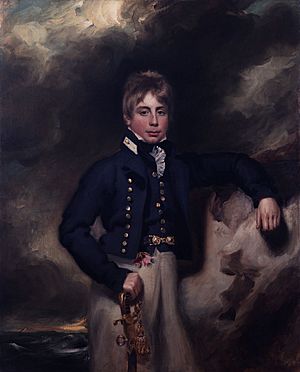John Dalling facts for kids
Quick facts for kids
Sir John Dalling, 1st Baronet
|
|
|---|---|
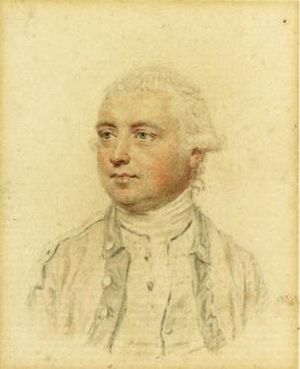
Sir John Dalling
|
|
| Born | c. 1731 |
| Died | 16 January 1798 |
| Allegiance | |
| Service/ |
|
| Rank | General |
| Commands held | Madras Army |
| Battles/wars | Seven Years' War American War of Independence |
Sir John Dalling, 1st Baronet (born around 1731 – died January 16, 1798) was an important British soldier and leader. He came from Burwood Park in Surrey, England. He was known for his military career and for governing a British colony.
Contents
Who Was Sir John Dalling?
Sir John Dalling was born around 1731. His father was John Dalling from Bungay. His mother was Catherine Windham. Her family, the Windhams, owned a large estate called Earsham in Norfolk. This estate was later inherited by Sir John Dalling's eldest son.
His Exciting Career
Sir John Dalling had a very active career in the British army.
Fighting in North America
He fought alongside James Wolfe in North America. In 1758, they were part of the British army in the Gulf of St. Lawrence. A year later, in 1759, Dalling helped capture Quebec from the French. This famous battle was called the Battle of the Plains of Abraham.
Leading in Jamaica and India
After his military service, Sir John Dalling became the Governor of Jamaica. He held this important position from 1777 to 1782. Later, he moved to India. There, he became the Commander-in-Chief of the Madras Army. He led the army from Fort St. George between 1784 and 1786.
Promotions and Honors
Sir John Dalling rose through the ranks in the army.
- In 1776, he became a Colonel of the 60th Foot regiment.
- By 1782, he was promoted to lieutenant-general.
- In 1783, he became Colonel of the 37th Foot.
- Finally, in 1796, he reached the highest rank of full General.
- He was also given a special honor. On March 11, 1783, he became a baronet. This meant he was given the title "Sir" and his family could pass it down.
His Family Life
Sir John Dalling was married two times.
First Marriage
His first wife was Elizabeth Pinnock. She was from Jamaica. They had one daughter named Elizabeth Windham Dalling. Sadly, their daughter passed away when she was only five years old. Elizabeth Pinnock herself died in 1768.
Second Marriage
In 1770, Sir John Dalling married Louisa Lawford. She was from Burwood Park in Surrey. They had several children together.
His Sons
- Lieutenant John Windham Dalling (born around 1769 – died 1786) was their eldest son. He passed away in Madras, India, when he was only 17. There is a special monument for him in Earsham Church.
- Charles Lawford Dalling (born 1772 – died 1789) was their second son. He also died young, at age 17. He is remembered on the same monument as his elder brother.
- Sir William Windham Dalling, 2nd Baronet (born 1774 – died 1864) was their third son. He became the next Baronet after his father. He inherited the Earsham estate in 1810. He also received money from a sugar estate in Jamaica.
- Captain John Windham Dalling (born 1789 – died 1853) joined the Royal Navy.
His Daughter
- Anne Louise Dalling (born 1785 – died 1853) married General Robert Meade in 1808.
The Vizagapatam Cabinets
Sir John Dalling owned some very special furniture called the Dalling Cabinets. These were a pair of Anglo-Indian ivory cabinets. They were made around 1786 near Madras, India, and then brought to Britain.
What They Looked Like
These cabinets were made of ivory and had beautiful designs. They showed buildings, trees, and flowers. They were also decorated with scrolling plants. The cabinets had small drawers and hidden compartments. They were designed to be like tiny desks or jewel boxes. They even looked like miniature Roman temples!
Where They Were Made
These special pieces of furniture were crafted in a place called Vizagapatam, on the northern Coromandel Coast of India. They were sold by English and Dutch trading companies. Two other similar cabinets were bought by King George III in the 1770s.
The cabinets were about 57 inches tall, 26 inches wide, and 13 inches deep.


